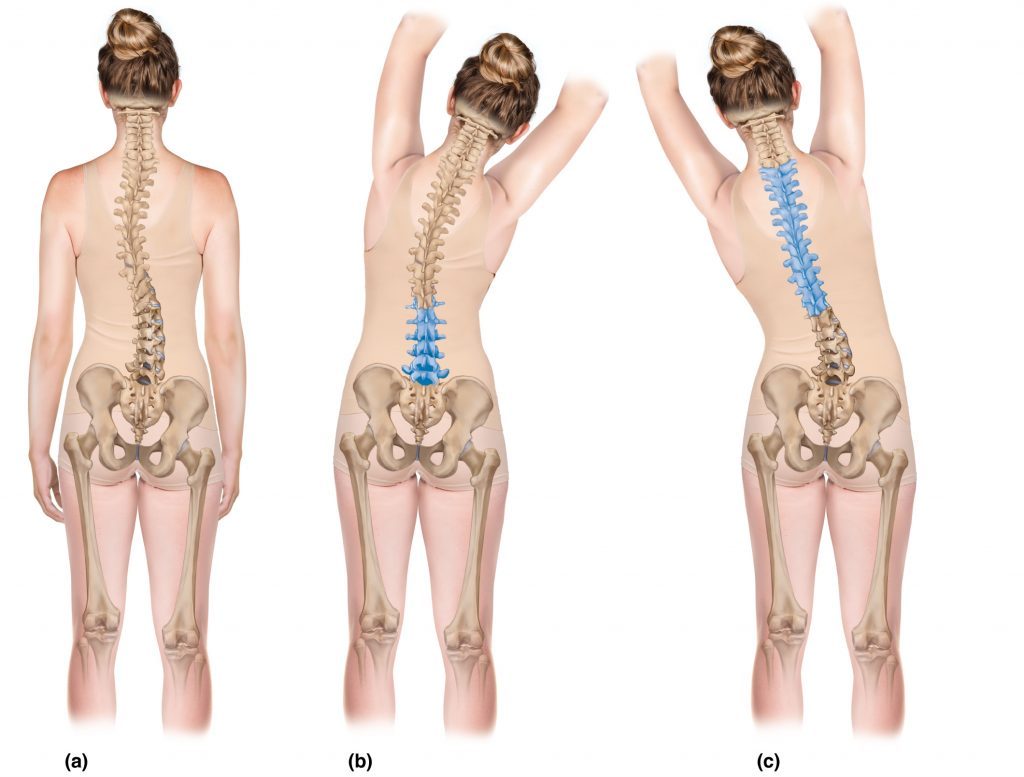Touch the top of your neck, near your hairline. That’s where your spine starts. From the base of your skull all the way down to your lower back, your spine is one of the most important parts of your body.
Your spine is made up of small bones called vertebrae that are stacked on top of one another, creating the curve of your back. In addition to protecting your spinal cord, your spine does a lot for you: It holds up your head, shoulders, and upper body so you can stand up straight. And it helps you bend, twist, and move around.
Your spine naturally curves in three places — near your neck, chest, and lower back — creating a shape similar to a somewhat flattened letter “S”.
But sometimes, your spine can curve either forward or sideways in places where it should not. This can cause pain, stiffness, numbness, cramping, and fatigue. Depending on the severity of the curvature and your age, symptoms of an abnormal curve can range from almost unnoticeable to very debilitating.
Spine curvature can be a result of two conditions — scoliosis or kyphosis. Though the conditions may be similar, they aren’t exactly the same. Scoliosis is a sideways curve of your spine — often taking the shape of the letter ‘S’ or ‘C’. Kyphosis is more of a forward rounding of the back, which leads to a hunchback or slouching posture.
As Vincent Arlet, MD, Chief of Orthopaedic Spine Surgery at Penn Medicine explains, you can have both conditions at the same time, but there are important distinctions between the two.
The Sideways Curve: The Basics of Scoliosis
Dr. Arlet says that the sideways curve of scoliosis is more common when children are growing — mostly during late childhood and early teenage years. Scoliosis is more common in girls, and it can run in families.

Sometimes it is noticeable — leaning a lot to one side or having uneven shoulders or hips can be signs of scoliosis. But it might not be that easy to catch, which is why screenings at annual checkups are so important.
The treatment for scoliosis depends a lot on a person’s age and how severe the curvature is. Dr. Arlet says, “In kids, bracing keeps the curve from getting worse. But in adults, it won’t really change anything, so we focus on exercise and physical therapy.” If the curve is severe enough, though, it may require surgery.
Braces are typically made of either plastic or elastic, depending on the patient’s needs. They usually need to be worn for most of the day and are used until the patient stops growing.
The Forward Curve: The Basics of Kyphosis
Kyphosis can occur at any age, though Dr. Arlet says it’s more common in adults. This is because kyphosis is usually related to degeneration of the spine, which is natural wear and tear of the spine’s bones and ligaments.
One type of kyphosis that’s more common in young teens is Scheuermann disease. This condition develops when several vertebrae in a row are wedged together. The cause of Scheuermann disease is unknown.
Scheuermann disease is treated with a brace and physical therapy. But if the curve is large enough to cause a lot of pain, surgery may be needed.
The curve of the spine that leads to kyphosis can be caused by arthritis, mini-fractures from osteoporosis, spinal injuries, or one vertebra slipping down onto another.
Treatment for kyphosis usually depends on the cause. With osteoporosis, the spine can usually be left alone, as long as there’s no pain or problems with the nervous system. But the osteoporosis itself will usually need to be treated in order to prevent future fractures.
“Kyphosis can be more painful than scoliosis,” says Dr. Arlet. If the curve or the pain is severe enough, surgery may be an option.
Why Might I Need Surgery For Scoliosis or Kyphosis?
If there’s no pain, surgery will most likely not be needed. But if it is, Dr. Arlet emphasizes its importance: “the purpose is to keep your spine from getting worse and curving further, which will eventually cause more pain for the patient.”

More curvature may lead to nerve compression, Dr. Arlet says, which can cause weakness, numbness, loss of balance and coordination, and pain. It can also become hard to do things, like walk long distances, because the nerves can become compromised.
Treatment — whether surgical or not — can help relieve you of the pain and debilitating factors that are caused by the curve in your spine. Dr. Arlet says, “At Penn, we’re seeing fewer cases that require surgery because of more effective nonsurgical treatments, leading to better outcomes for patients.”

